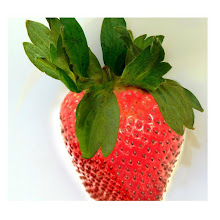
(Hudson Furniture birch coffee table, 2006)

(Geoffrey Harcourt Cleopatra lounge, 1970)
Although we may buy something partly for its appearance or its imaginative form, we may still not consciously consider this a purchase of art. Our underlying attitudes toward this kind of object, however, do mirror our attitudes toward art. We appreciate its playful originality (e.g. a clock with telephone dial face), its aesthetic (e.g. Hudson Furniture Atlantis chandelier) and sometimes the established recognition of its good design (e.g. Alvar Aalto vase, 1936). While an object like the Ant chair may be produced many times according to specified standards, and seem less artistic in this way, Arne Jacobson's design itself was created to be unique for its time. Considering this, the number and uniformity of a product like the Ant chair becomes more comparable to multiples of prints. In the case of prints, their method of production usually does not detract from their acceptance as art. Consumers also use objects to express themselves via their chosen environment. Expression is part of art. We treat goods as having expressive qualities, whether they were meant to or not. Things can have utility while also functioning emotionally for us as art.

(clock with telephone dial face)

(Barlas Baylar Hudson Furniture Atlantis chandelier, 2008)

(Alvar Aalto vase, 1936)

(Arne Jacobson Ant chair, 1952)

(expression through environment)
Our subconscious desire for art is apparent in our relationship to almost any kind of consumer item. We create items to be visually interesting even when it isn't necessary, because it is a human activity to do so. It is the human way of relating to the material world. We have consistently been drawn to art in our daily lives.
As the subject of this blog entry has been living spaces, a basic historical example for living space would be the cave paintings in France. Were these a case of the need for documentation or a sign/marking for the purpose of the place? Was this good craftsmanship? A representation of reality?
Or were these paintings also a step toward examination of our world through sight? Some impression to share? Did these paintings manifest a more primal need to create, and to celebrate the exciting act of vision? Also, were they made in a cave only in order to protect them from the elements, or was art becoming part of a daily life setting?

(Lascaux caves)

(Lascaux caves)

(Lascaux caves)

(Peche Merle)
Art can run through practically any part of life. It seems that humans have taken this to extremes.
We are especially capable of this, compared to other animals, due to our variety of modes of production.

(Art Deco Nightstands-- wood, burl veneer)

(Mr. Impossible by Philippe Starck, 2007-- polycarbonate)

(Todd Bracher side table, 2005-- polypropylene and lacquer)


(Couture Rugs by Angela Adams, 2003-- wool)


(Rugs by Amy Helfand, 2004-- wool)
Humans experiment with different mediums, until art cannot be defined in only traditional terms. Art becomes the imaginative or aesthetic spark that we perceive in a wide field of creative activity. Our consistent inclusion of art in our goods, albeit subconscious at times , shows our need for it. To the degree that we require or desire art, we are human.
photo credits: Hudson Furniture, Artifort, Iittala, Fritz Hansen, ursispaltenstein.ch/blog/weblog.php?/weblog/2007/07/10/, sandrashaw.com/AH1L02.htm, spacetoday.org, judeart.com/Pic17Exp.htm, judeart.com/Pic17Exp.htm, Canonbury Antiques, Kartell, Zanotta, Angela Adams, Amy Helfand, and unknown sources.
